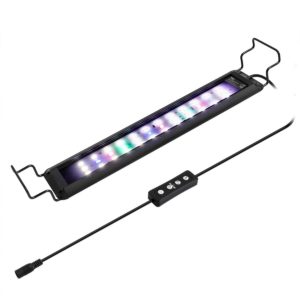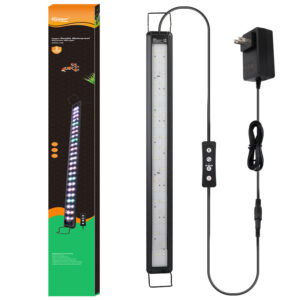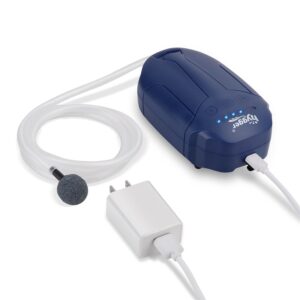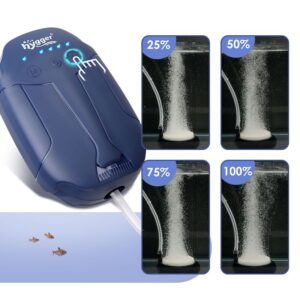What should I Feed and Grow fish
The diet and feeding requirements can vary for different fish species. So, it is necessary to choose proper food and feed the appropriate amount. Because overfeeding will lead to poor water quality and pose threats to fish health. Following the article, we will share more about what and how to feed and grow aquatic pets including fish feed and grow. Now, let’s dive in.
Aquatic pet group
Generally, an aquatic pet group refers to a group of pets that live in water, such as fish, turtles, and frogs. Next, we will list some common aquatic pet groups.
Fish
Actually, there are various aquarium ornamental pet fish. Now, we will show you some of them.
| Betta Bettas are freshwater tropical fish. They are also called Beta, Betta spledens, Chinese fighting fish, Japanese fighting fish, or Siamese fighting fish. Bettas are aggressive and instinctively territorial. You can keep them with nerite snails, otocinclus catfish, and kuhli loaches, etc. |
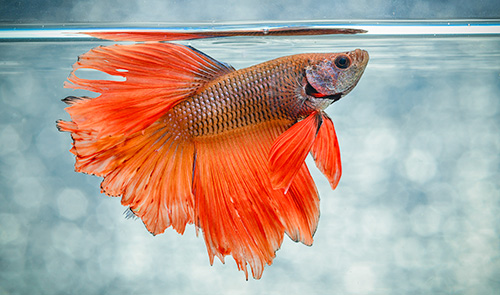 |
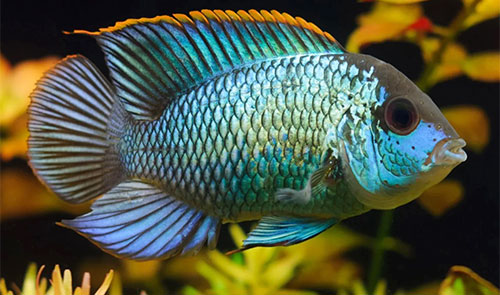 |
American Cichlid Definitely, there are many American Cichlid species. For example, large South American Cichlid, medium Central American Cichlid, and dwarf South American Cichlid. Some of them are aggressive, while some are peaceful. |
| Tetras Tetras are one kind of popular freshwater fish, coming from South America, Central America, and Africa. Most of them are easy to keep. Tetras fish are small in size – generally, 1.5-2 inches and one tetra can produce 50 tetra fry on average. |
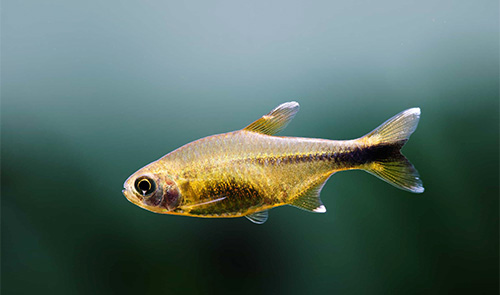 |
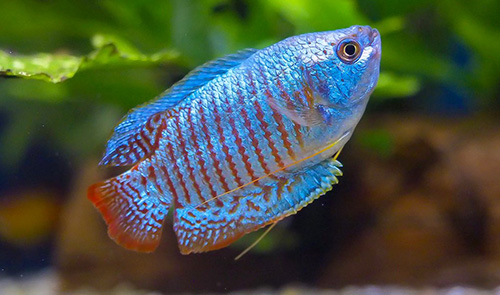 |
Dwarf Gourami Dwarf Gourami is a small and colorful freshwater fish. Commonly, they grow to be around 2-3 inches. Dwarf Gourami is generally peaceful and can be kept with other peaceful fish of a similar size. They are active swimmers and enjoy having plenty of hiding places and open swimming areas. |
| Algae Eater Algae eaters are one type of fish or shrimp that helps to control algae growth in an aquarium or pond. For instance, Siamese Algae Eater, Plecostomus, Otocinclus Catfish, Chinese Algae Eater, and Amano Shrimp. |
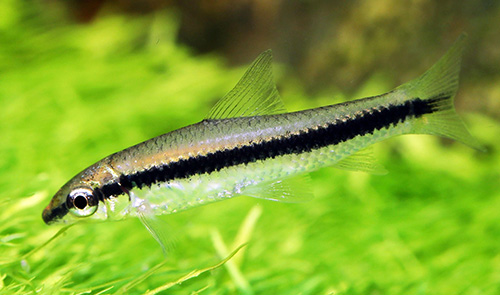 |
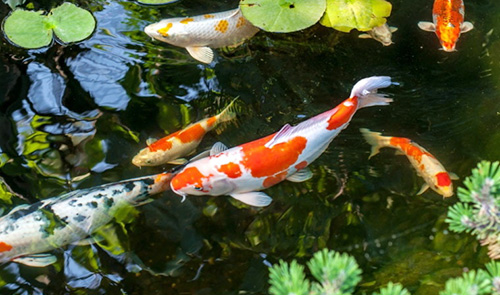 |
Fancy Koi Fancy Koi is often kept in outdoor ponds or large indoor aquariums. Because they can grow quite large, with some individuals reaching lengths of up to 2 feet or more. Also, Fancy Koi prefers outdoor ponds or aquariums with ample filtration and aeration. |
Turtles
Pet turtles are reptiles with large shells. In fact, there are many turtle species around the world. But turtles can be divided into three main types – Aquatic pet turtles, Semi-aquatic pet turtles, and Terrestrial pet turtles
Generally, terrestrial turtles are easy to keep, because you do not need to pay attention to the light, water parameters, water quality, filtration system, or something like this. However, aquatic and semi-aquatic turtles may demand lighting, a filtration system, as well as water quality and temperature.
Crustaceans
Crustaceans can be great tank cleaners. Some are scavengers, which consume uneaten fish food to keep clean aquariums. While some do well in algae control. They consume algae in aquariums. Freshwater shrimp (e.g. Amano shrimp), Hermit crab, and crayfish are common crustaceans.
Invertebrates
Invertebrates are animals without backbones. For instance, snails, corals, clams, and jellyfish. Take corals as an example, they are commonly kept in saltwater aquariums. They are known for their intricate shapes and vibrant colors. However, keeping corals requires specialized equipment and careful attention to water quality.
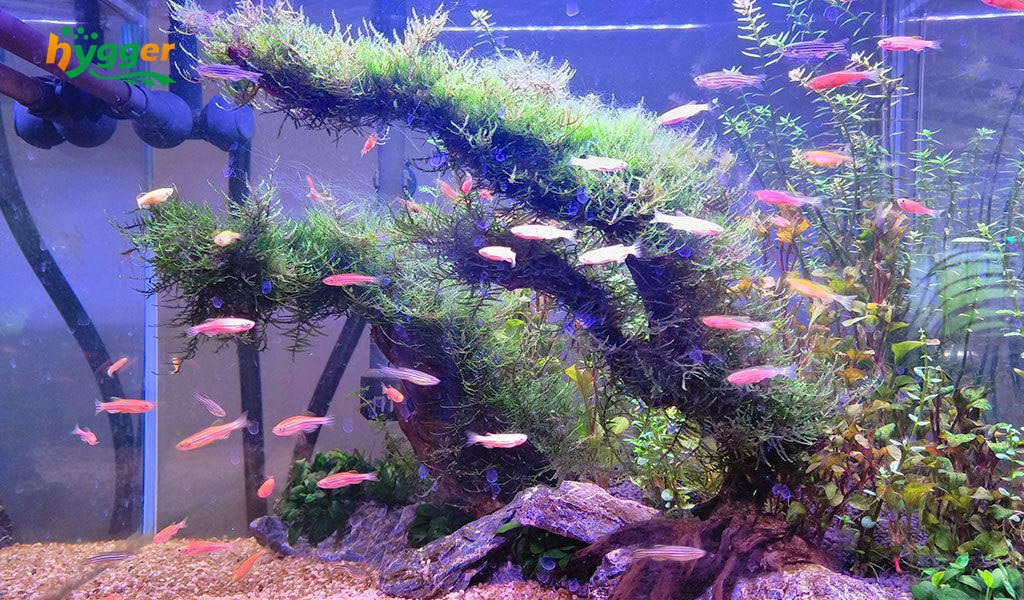
How often to feed and grow fish
The frequency and amount of food you should feed your fish can be determined by several factors, including the species of fish, their age and size, and the temperature of the water. But, there are general rules for feeding fish and growing.
- Young fish and fry: Frequent feeding is feasible. For example, 3–4 times per day.
- Adult fish: Feed once or twice each day, depending on their activity level and metabolism.
Additionally, given below are some specific examples of feeding for different fish species. Just take it as a reference.
| Fish name | Feeding frequency |
| Betta fish | 1. Flakes: once each day 2. Pellets: once each day 3. Frozen brine shrimp & worms: once or twice each week |
| Tetras | 1. Flakes: once each day 2. Pellets: once each day 3. Frozen brine shrimp & worms: once each week (Optional) |
| Dwarf Gourami | 1. Flakes: once per day 2. Frozen brine shrimp & worms: once each week (Optional) |
| Algae Eater | 1. Pellets: three times each week 2. Dried seaweed & kelp: once per week (Optional) |
| Fancy Koi | 1. Flakes: for juveniles, once each day 2. Pellets: for adults, once per day 3. Dried seaweed & kelp: once or twice each week (Optional) |
Other aquatic pets feed and grow
Turtles
The diet requirements vary from turtle species. Some turtles are carnivores or herbivores, but most turtles are omnivores. However, keeping a balanced diet is crucial. Insects, feeder fish, or vegetation are available food sources. Actually, turtles need various diets to meet their nutrient requirements.
Basically, the pet turtles’ food should be:
- No artificial additives: if you feed commercial food, you should make sure that the food does not contain any artificial additives, flavoring, or color for instance.
- Sufficient protein and calcium: pet turtles do require protein, especially young pet turtles. Also, calcium is crucial for their shell growth.
In general, meats are the main food for baby turtles, while they may eat both meat and vegetation after becoming an adult. You can feed them once or twice a day, and make sure they can finish eating within 5 minutes. Furthermore, you should add calcium powder to the turtle’s food 1–2 times each week.
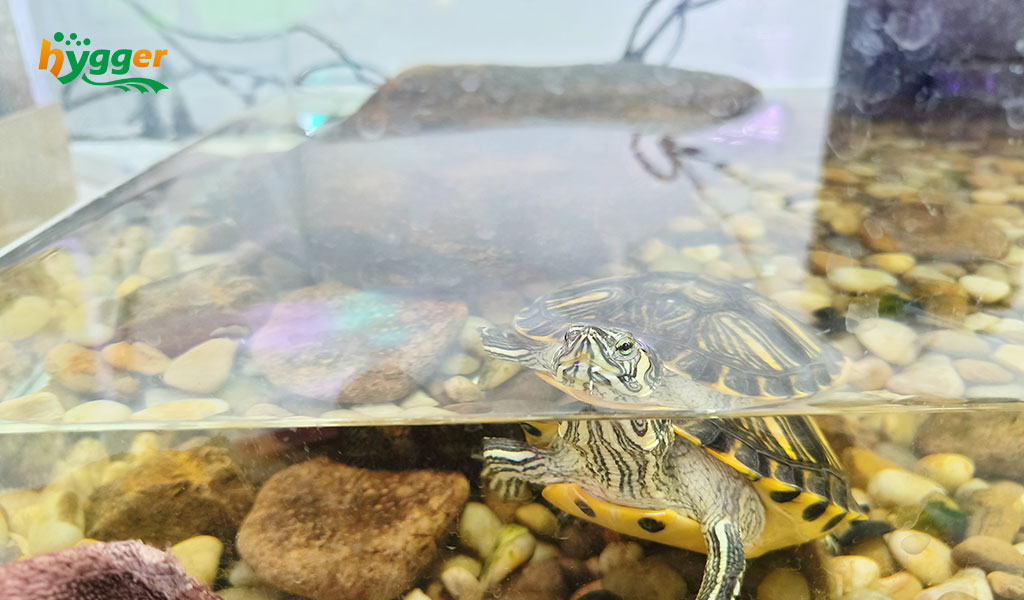
Crustaceans
A balanced diet is undisputed. Generally, the available foods include uneaten fish food, debris in your tank, fallen leaves of live plants, algae, organic matter, sinking pellets, wafers, flakes, frozen food, etc. In molting crustaceans, they require extra food to form new exoskeletons.
Let’s give you some examples. Take a look at lobsters first. In captivity, algae, plants, dead aquatic pets, worms, and some commercial food can be their diet. On the other side, hermit crabs eat vegetables and fruits. Also, hermit crabs need to drink water. Therefore, you should provide clean freshwater or saltwater. But do not use tap water. Since the chlorine and minerals in tap water are harmful to hermit crabs. By the way, most hermit crabs are nocturnal. Consequently, it is best to feed them at night.
Invertebrates
Feeding invertebrates in aquariums can vary depending on the specific species of invertebrates you are keeping. As for snails, the available foods include algae (e.g. brown algae, green algae, and green spot algae), decaying or dead leaves and plants, fish feces, uneaten fish food, vegetables (e.g. zucchini, cucumber, and squash), fruits (e.g. watermelon and apple), blood worms, brine shrimp, pellets, and algae wafers.
In addition, how to feed corals in saltwater aquariums? Plankton, zooplankton, bacterioplankton, debris, dissolved organic matter, small crustaceans, small fish, invertebrate larvae, and byproducts of photosynthesis are available options. Plus, you can feed pet corals commercial pellets, flakes, and freeze-dried foods. By the way, feeding some meaty food a few times each week, like mysis shrimp and brine shrimp, is beneficial to grow corals fast.
Final thoughts
In summary, no matter what aquatic pets you keep. Just keep in mind – never overfeed. A varied and balanced diet is recommended. You can follow ‘feed small amounts of food multiple times a day rather than one large feeding’. Moreover, it is better to make sure your pets finish eating within a few minutes (e.g. 2–3 minutes). To maintain excellent water quality, you can remove uneaten food after feeding. Additionally, feeding nocturnal pets at night is the best option.

